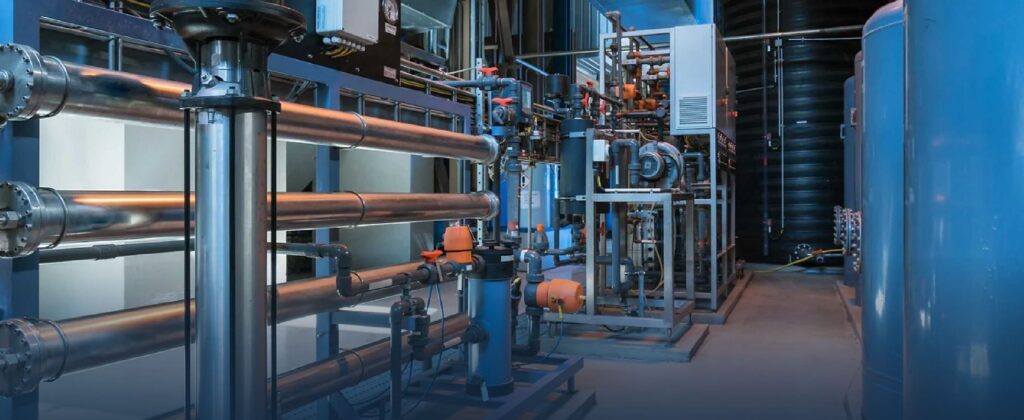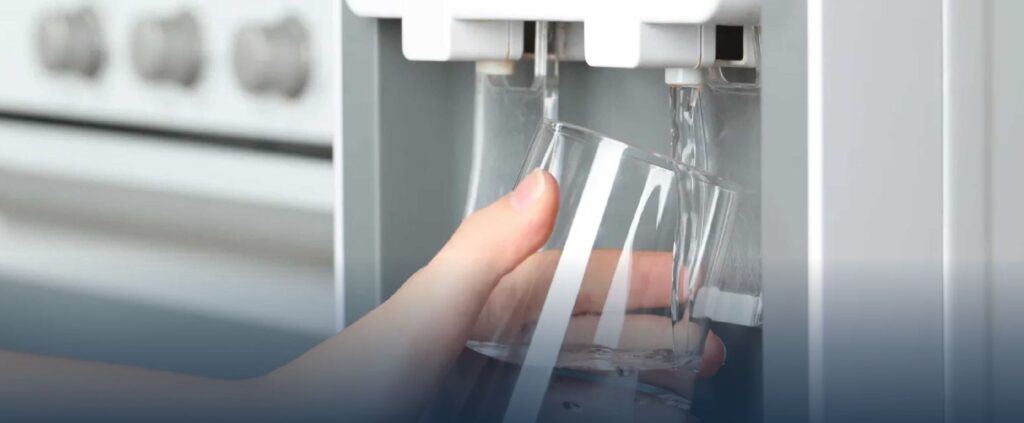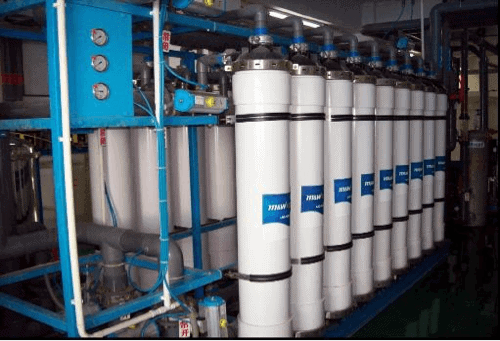Ultrafiltration
Ultrafiltration, unlike reverse osmosis membranes which include nanofiltration membranes, are not deteriorated by strong oxidising agents like chlorine and chloramines.
[Ultrafiltration in electroplating plant to treat effluent to ensure compliance with effluent discharge standards]
Ultrafiltration is the ideal choice for a whole host of applications:
- Purification of surface water, groundwater and spring water to make drinking water and process water.
- Treatment of wastewater.
- Pre-treatment in seawater desalination plants in combination with reverse osmosis.
- Water for industrial use to close water cycles.
Ultrafiltration is now widely used in various wastewater treatment applications including automobile, abattoir and other food processing industries. The presence of oil in aqueous solutions is not a major issue and levels as high as 35 mg/l can be tolerated.
Ultrafiltration generally requires CIP (Clean-In-Place) to recover flux rate. This is dependent on water quality and pre-filtration including sediment and activated carbon is required to reduce the need for CIP. Organics, colloidal material and fine particles including bentonite can rapidly foul nanofiltration membranes. As a general rule influent with a turbidity of more than 15 NTU requires pre-treatment for instance flocculation or coagulation. Immersed ultrafiltration membranes used in the MBR have a higher tolerance for poor water quality and are commonly used in wastewater treatment. A membrane bioreactor (MBR) is the combination of a membrane process like microfiltration or ultrafiltration with a suspended growth bioreactor and is now widely used for municipal and industrial wastewater treatment.
Ultrafiltration requires much lower pressures than reverse osmosis and there are modular systems available that can work simply with gravitational influent. Most commercial ultrafiltration systems require frequent forward flushing and backwashing to recover the flux rate. These sequences are typically automated with a cycle comprising of a forward flush- backwash – forward flush sequence. the backwash flow rate is typically 1.5 times that of the service flow rate.
A backwash is more effective than the forward flush as the flow is reversed and the membranes cleaned with permeate. In instances where the flux rate cannot be recovered, chemical cleaning is required. The type of chemicals used depends on the possible contaminant fouling the membrane pores.
For organic contaminants and biofouling generally, a strong alkaline solution (pH of at least 11) with 400 ppm Chlorine is very effective. (Caustic and Sodium Hypochlorite solution) – For minerals clogging the pores, citric acid is normally used. All chemical cleaning operations require a flow of more than the service flow rate followed by a soak of at least 4 hours. Membrane autopsies can also be carried out to find the cause of plugging of the pores.




